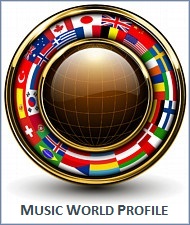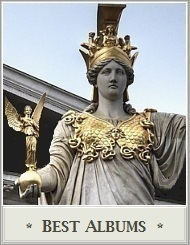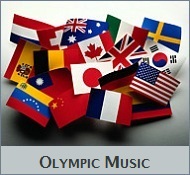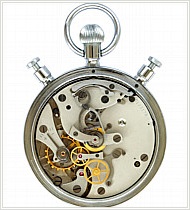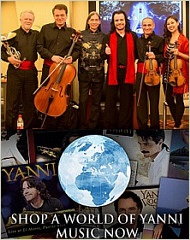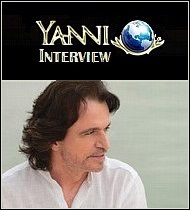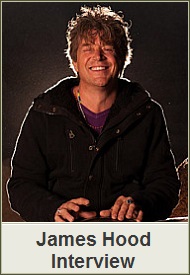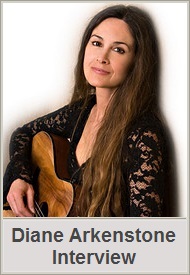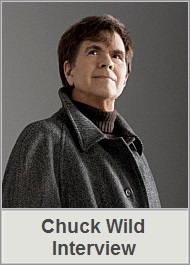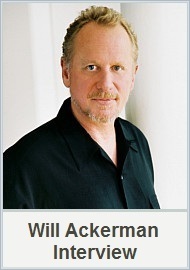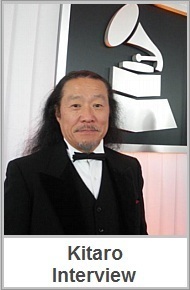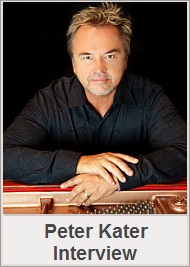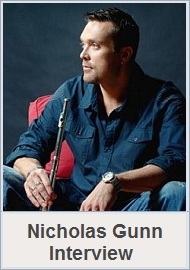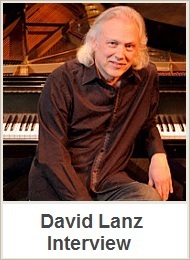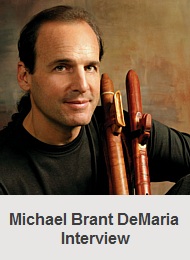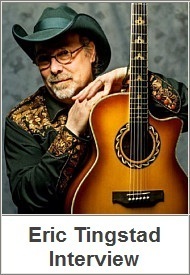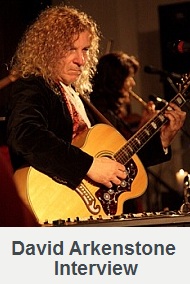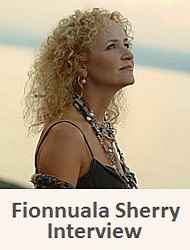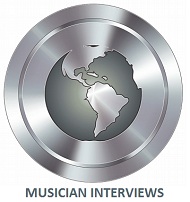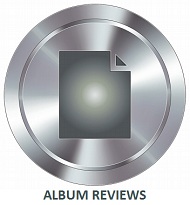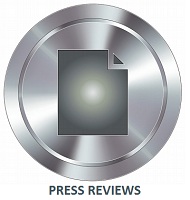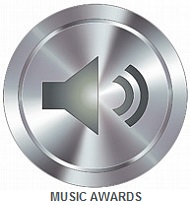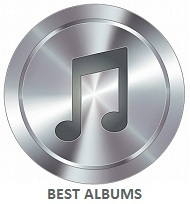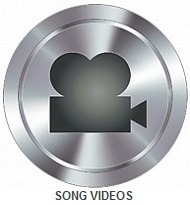
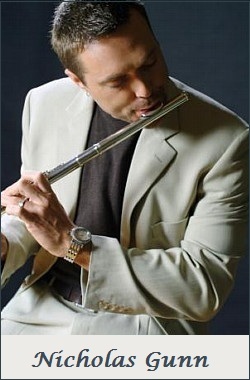 Nicholas Gunn Interview – Special News in 2013 and Forward:
Nicholas Gunn Interview – Special News in 2013 and Forward:
Multi-platinum recording artist Nicholas Gunn is a classically trained flutist recognized as one of the best-selling instrumental flutists worldwide.
Famous for the contemporary atmosphere and resounding beauty of his music, Nicholas Gunn has achieved earlier success of over 2 million albums sold, having become a legendary artist in the instrumental music industry, with many of his albums reaching the Top 10 Billboard Charts.
Nicholas Gunn’s newest instrumental release for 2012, and perhaps most significant of all is his fourteenth album named Thirty-One Nights, which arrives after an interval of 5 years. The highest standards we have come to expect are expertly portrayed on Thirty-One Nights, which enlists the world-class talents of vocalist Dana Kemmerle, along with acoustic guitarist Chris Fossek.
New Age Music World host John P. Olsen had an opportunity to interview Nicholas Gunn months prior to 2013. During the newest interview with Nicholas Gunn the range of topic include a conversation about his new album, history and career as an artist, National Park albums, and the Gemini Sun Records Label he once owned and operated.
Nicholas Gunn also states his views on today’s music industry and the upcoming Ballots and Nominations for the 55th GRAMMY® Awards. And perhaps most importantly, Nicholas Gunn has released a significant news announcement regarding his music career going forward. Today we are pleased to present their conversation to fans, and to Music World site visitors.
John P. Olsen: Thank you for accepting my interview invitation Nicholas. It is a privilege to host your newest interview in 2012, here at New Age Music World. I have been a huge fan of your music for many years, plus I enjoyed reading even more about you while preparing for our interview together. I must say you have experienced a fascinating life and career Nicholas.
Nicholas Gunn: Thank you John, it is really a pleasure to be a part of your music forum today, and it’s great to see how popular New Age Music World has become.
John: Thanks for your compliment! Let me begin with your earliest experiences as a musician, since your educational studies seem to have been a formative influence in the music you produce today. You were born in South East England, and were academically trained from age 7 to 11 in classical music at the Royal Academy of Music conservatoire in the UK. While attending the Royal Academy of Music, what led you to choose woodwinds over other instruments, and would you please tell us about your earliest academic studies, training and first introduction to music while living in the UK?
 Nicholas Gunn: I grew up in a small, quaint village called Hartlip in Kent County England. It was in many ways a beautiful childhood. I think when there is that much space around you and the chatter is minimized, it’s easier to focus on things such as music. When I was around 5 or 6 I used to watch Top of the Pops on TV and tap away on the side of the couch. I think my folks were listening carefully to see if I had any sense of rhythm and inclination for music.
Nicholas Gunn: I grew up in a small, quaint village called Hartlip in Kent County England. It was in many ways a beautiful childhood. I think when there is that much space around you and the chatter is minimized, it’s easier to focus on things such as music. When I was around 5 or 6 I used to watch Top of the Pops on TV and tap away on the side of the couch. I think my folks were listening carefully to see if I had any sense of rhythm and inclination for music.
My Grandfather was a professional guitar player with The Felix Mendelssohn Orchestra so I think there was a desire in many ways to keep the music going in the family. I remember at 6 seeing a performance on TV of Sir James Galway and thinking how beautiful the flute sounded. It stuck with me and when my folks asked me what I wanted to play as an instrument that’s immediately what I said. It’s crazy really, the next thing I know I am taking lessons at 6 from the Royal Marines Bands principle flautist, Mick Judson. An incredible experience, full of wonder and endless possibilities!
He would come to my house in Hartlip once or twice a week for lessons and I would take my exams in London; it was a lot for a young kid but really rewarding. He was a great instructor and man, and a big part of the foundation my music is built upon. One time, Mick allowed me to sit with him in the pit orchestra to the musical Oliver in London, and I remember having a brief encounter with Sir James Galway during this time and thinking, this is really what I want to do!
By the time we moved to Los Angeles in 1979 I had music training most eleven year olds rarely acquire and was a misfit really. It was tough, as an eleven year old boy, walking with your flute to band through junior high school. I witnessed a huge disparity in culture and acceptance of art on multiple levels. It was cruel and I was pissed off at these kids that bullied me. There were several occasions I would walk outside of gym class and I would have my ass handed to me on a platter for playing flute. Its cliche really, all band kids experience bullying, some more than others, it’s just the way it was and sometimes still is. My music holds a sense of compassion I have trouble finding otherwise. I believe it has healed me and allowed me an outlet of expression to resolve these feelings for myself. I like to believe there is no anger in my music, just love, beauty, compassion, and acceptance. I wanted to convey that message.
John: Knowing now that the Royal Academy of Music Alumni include other great artists like Elton John, Annie Lennox and Michael Nyman, and others; did you appreciate the fact at the time you were beginning a strong foundation for a successful music career later in life?
Nicholas Gunn: No, not really, not at that time. I had no idea about any of those things. It was more a feeling of this is what everyone does. When you are that young, there is no real sense for “aligning” yourself within academics or community. I pretty much followed what my folks told me to do, and believed it to be normal, and now have immense appreciation for them guiding me and recognizing my potential.
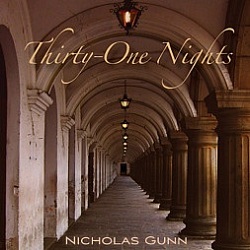 John: Classical music influences are apparent in your compositions, including your new album Thirty-One Nights. What classical music elements, for example structure, rhythm or metrics, do you find most appealing?
John: Classical music influences are apparent in your compositions, including your new album Thirty-One Nights. What classical music elements, for example structure, rhythm or metrics, do you find most appealing?
Nicholas Gunn: I have to say it’s the interplay between rhythm and melody. Being a flautist, I studied mostly counterpoint theory at the academy. We poured over the great composers in detail and I absorbed the constant interplay you find in lead lines, counter melody lines, and the foundation it all sits upon; rhythm. I believe that one essential element of music is structure. Meaning; memorable, reoccurring, lasting melody will always make an impression on the listener over a long extended period of time.
As an instrumentalist I find it even more important to remember this. Strong verse, chorus, turnaround and bridge are vital to great compositions. If the music lacks a lyric and a vocal, I believe it’s even more important to impress structure and melody on the listener. Think about it, music in the moment can be inspirational, but if one can reflect upon a composition because of its melody and literally be transported to that moment in time again, that is the true essence of the music experience on the human experience.
John: What was the turning point when you decided to pursue a challenging career as an artist?
Nicholas Gunn: When I was around 16-17 years old I side stepped flute for a few years and took up drums, playing in both marching band and several rock bands. I literally played the kit in every bar on the Sunset Strip over a three year period including The Whiskey, The Roxy, Madam Wong’s, The Troubadour, etc. It was a great experience at a very young age and it gave me the douse of confidence I needed. I had a brief stint doing some commercials and modeling as well and actually made a few bucks but that’s a whole different story! I came out of this phase “knowing” I guess you could say, that there was only one direction for me, and that was to fully immerse myself into creating my own instrumental music.
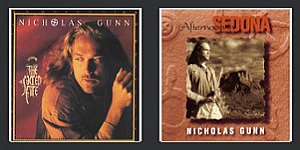 I was a huge fan of Vangelis, Jean Michael Jarre, Pink Floyd etc., and saw that instrumental music had its place in the market and was growing at that time. I bought some recording gear and schooled myself in engineering and production, learning how to get recordings to sound great! I went down to Westlake Studios and other studios in West Hollywood and just hung out asking awesome stupid questions and rubbing shoulders with the best engineers. There was no question afterward that I was fiercely dedicated to making my own music.
I was a huge fan of Vangelis, Jean Michael Jarre, Pink Floyd etc., and saw that instrumental music had its place in the market and was growing at that time. I bought some recording gear and schooled myself in engineering and production, learning how to get recordings to sound great! I went down to Westlake Studios and other studios in West Hollywood and just hung out asking awesome stupid questions and rubbing shoulders with the best engineers. There was no question afterward that I was fiercely dedicated to making my own music.
John: You released your first album Afternoon In Sedona in 1992, and a year later re-released Afternoon In Sedona thru the Real Music record label, which directly influenced sales, and changed the course of your career, isn’t that right?
Nicholas Gunn: That’s pretty accurate I would say. Before being signed to Real Music I had worked pretty hard to get popular retail chains such as Natural Wonders and Nature Company to recognize myself release of Afternoon in Sedona. Those were great retail chains and they focused on a select amount of instrumental titles in their thousands of high end stores. It was easy math really; mass retail exposure, select titles, genre specific, those were great days for sales! I had sent Real Music several submissions of Afternoon in Sedona but it was only until Natural Wonders showed interest they offered me a deal. It made sense for everyone and we re-worked the album a little and re-released in 1993 to moderate success, not big success mind you! There was a heightened awareness of the product but it was not until my second album The Sacred Fire that things changed drastically.
John: That’s right your 1994 release The Sacred Fire, was the first album to make the Top 10 Billboard Charts in the new age category. Were you surprised by making the Billboard Top 10 New Age chart verses another category since your albums can be placed in a broader, instrumental or world music category?
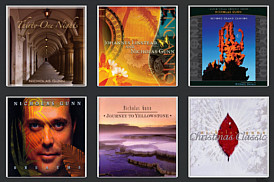 Nicholas Gunn: No, I was not surprised actually. Real Music had made it clear we were binning the album New Age at retail. Back in those days, binning was integral to sales and exposure and once you chose your category, well you’re pretty much stuck, especially if you sell.
Nicholas Gunn: No, I was not surprised actually. Real Music had made it clear we were binning the album New Age at retail. Back in those days, binning was integral to sales and exposure and once you chose your category, well you’re pretty much stuck, especially if you sell.
The New Age chart was an accessible chart as well, meaning it was an emerging genre and not so saturated with other artists. The Sacred Fire actually did not receive its initial success at conventional retail but started selling big at both Natural Wonders and at Nature Company.
The album was literally blowing out the doors holding a #1 chart position in the chains for a year or so. Around this time conventional retail chains such as Borders and Barnes were watching this emerging genre closely and started to expand their New Age Music selections and positioning.
The Sacred Fire album, along with my third album, The Music of the Grand Canyon, which closely followed, was embraced and we finally received chart position through sales at these and similar retail chains.
John: I must say your newest release Thirty-One Nights, which debuted on the Billboard Top Ten New Age Chart, is a beautifully designed album Nicholas. Your albums have consistently made the Top 10 Billboard Charts over the years, so I wondered is making the Billboard Chart is an accurate litmus test for an album’s success over the long haul?
Nicholas Gunn: Thank you John, I am happy to hear Thirty-One Nights resonates with you. This is a great question, but I think it’s important to clarify what Billboard chart position actually means as it seems there is a general misunderstanding of how the system really works. Billboard is an independent trade magazine that reports industry sales via chart position. Billboard receives its sales data from another company called Soundscan.
Soundscan retrieve its sales data from Soundscan retail members. For example, Wal-Mart pays an annual fee to be a member of Soundscan, required by the RIAA (Recording Industry Association of America) that they participate as a major and recognized record retailer. Barcodes at the register are scanned upon sale and sent to Soundscan acknowledging each sale. At major online retailers such as iTunes it is via the embedded ISRC code on the MP3 data through digital download.
 Depending on the zip code of sale, one sale can actually represent two or more sales due to the remote location of the sale and person per capita of the zip code. If you are a small retailer, mom or pop store, or even a significant type of other retailer, then most often, these retailers are not participating members of Soundscan. Sales in turn are not being reported, at all! At the height of my sales through alternative retailers such as Nature Company, Natural Wonders, National Park stores, hundreds of thousands of sales went unrecognized as they were not members of Soundscan. There are no gold or platinum records on my walls despite my significant overall sales within the industry.
Depending on the zip code of sale, one sale can actually represent two or more sales due to the remote location of the sale and person per capita of the zip code. If you are a small retailer, mom or pop store, or even a significant type of other retailer, then most often, these retailers are not participating members of Soundscan. Sales in turn are not being reported, at all! At the height of my sales through alternative retailers such as Nature Company, Natural Wonders, National Park stores, hundreds of thousands of sales went unrecognized as they were not members of Soundscan. There are no gold or platinum records on my walls despite my significant overall sales within the industry.
The Billboard chart positions I actually received over the years were from a fraction of these sales through member participating retailers such as Borders, Barnes, Sam Goody, etc. With that said, while Billboard is indeed an actual litmus test of the success of a title, it does not represent the overall sales performance of a title accurately. My mentor, Harvey Cooper, always said; “Comments and opinions of music are only perceptions but real sales are a true indicator of commercial success.”
John: On your fourteenth album Thirty-One Nights, I must say you have a great team with vocalist Dana Kemmerle and guitarist Chris Fossek. How did you meet Dana and Chris, and could you tell us about the project you created together?
Nicholas Gunn: I met both Chris Fossek and Dana Kemmerle in Santa Barbara, CA. Chris was a local accomplished musician, who has been playing the Santa Barbara circuit for some time. I heard him at a local wine bar and quickly realized this guy had great technique and style. At that time I was starting to formulate what I wanted to do for a new album and listening to him play was really inspiring! I got to know Chris over a period of months before we started tracking together and we became tight friends.
We are the same kind of people, infusing our music with our life experiences! Chris wrote several pieces on the album which allows it to transition beautifully at two main points; Candle Dance & From Water to Wind. Chris also wrote the title track Thirty-One Nights which sets the tone of the album so well. Dana is an absolute breathe of fresh air. After deciding to finish her graduate degree at UCSB in global studies our paths crossed at the very same wine bar I first met Chris in.
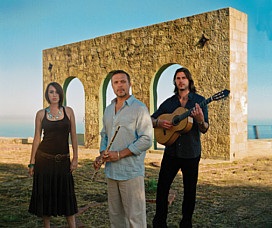 Dana has been the core inspiration behind the experience and story that became Thirty-One Nights. I was going through a very difficult time with many changes in my life and she was continuing on with her studies in Spain and in Mexico. We became romantically involved and the next thing I know I asked her to record some spoken word vocals on a track that became track 13 Recuerdame, on the album.
Dana has been the core inspiration behind the experience and story that became Thirty-One Nights. I was going through a very difficult time with many changes in my life and she was continuing on with her studies in Spain and in Mexico. We became romantically involved and the next thing I know I asked her to record some spoken word vocals on a track that became track 13 Recuerdame, on the album.
She has a gorgeous balanced tone in her speaking voice and it was an instant match and hit for me in the studio and many more tracks followed! It’s difficult to make spoken word work within music; it has to be just right! Dana and I now work passionately together in many aspects of our lives. We spent thirty one nights together in Mexico recording flutes on top of Mayan pyramids and writing poetry deep in the jungle. She’s one smart cookie, has a healthy and balanced perspective on life, and someone I want to associate and grow with for a very long time.
John: What are the vital key elements Dana and Chris convey to your instrumental with vocals composition Thirty-One Nights?
Nicholas Gunn: Well, Chris comes from an extremely studied background in music with a master’s degree from Cal Arts in Flamenco guitar. It was important to me that I had an authentic approach and sound for Thirty-One Nights. Authentic Flamenco playing includes so many different aspects, such as the knocking on the guitar body, types of open strumming and closed strumming and where picking occurs over the sound hole. Even finer details, such as which part of the finger nail is used to create different sounds against the string, are all important factors!
The guitar itself is vital to the sound. Chris plays on a handcrafted Manuel Bellido guitar which includes design features such as a wider neck and intricate body/sound hole design. Nylon strings are always used, of a certain type, and after a certain amount of wear. There are no pickups used in recording and a single microphone placement to capture a clean natural sound. These are all important factors that create a certain resonance consistent with Flamenco guitar. His writing style is also different than mine which lends to a well-balanced album that transitions at all the right spots. It’s a good partnership in that we are different in all the right ways! With Dana it is about a personal and emotional connection that is intimate.
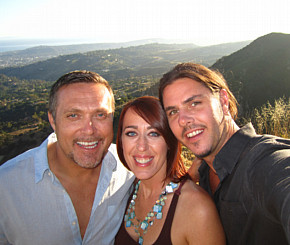 We experienced Thirty-One Nights together in real time and she has watched, supported, and participated in the unfolding of the album over a year and a half. She has a beautiful speaking voice and her bilingual abilities were a perfect and authentic evocative addition to the album. I have used spoken word sparingly before, and I am telling you, it’s a hard thing to pull off! Dana just had this tone and approach that was, well otherworldly, very seductive such as on The Swallows of Na’ Lu’um. We walked together through jungles, remote Mayan pyramids, went cave diving in Senotes, and used this experience to fuel creativity. Dana wrote about her experiences and created poetry centric to the experience. Dana and I are continuing to work on other exciting projects and in business together. We are partners in many ways.
We experienced Thirty-One Nights together in real time and she has watched, supported, and participated in the unfolding of the album over a year and a half. She has a beautiful speaking voice and her bilingual abilities were a perfect and authentic evocative addition to the album. I have used spoken word sparingly before, and I am telling you, it’s a hard thing to pull off! Dana just had this tone and approach that was, well otherworldly, very seductive such as on The Swallows of Na’ Lu’um. We walked together through jungles, remote Mayan pyramids, went cave diving in Senotes, and used this experience to fuel creativity. Dana wrote about her experiences and created poetry centric to the experience. Dana and I are continuing to work on other exciting projects and in business together. We are partners in many ways.
John: Would you like to tell us more of the story for Thirty-One Nights, and inspiration behind the songs?
Nicholas Gunn: There is a special Thirty-One Nights storybook PDF, with personal photos, that is embedded on the CD and is also available with a full album download. It would be my pleasure to share this with your readers and is the best way to answer this question. Enjoy!
John: I read Thirty-One Nights had a release date of September 11, 2012. Was there any significance of releasing Thirty-One Nights on 9/11, a date now recognized as the American Federal Holiday – Patriot Day?
Nicholas Gunn: No, not at all. Here is the thing; September 11th is a recognized national street date with most major music distributors. This street date has long been in place before the unfortunate events of 9/11. I decided to sign with label Spring Hill Media, distributed by Allegro Media and their system adheres to these dates. I try not to make any political or religious references in my music and this date did not influence me in any way. A broad stroke approach to creating provocative, moving, and inspirational music is my only goal.
John: You have a great number of National Park records, which began under Real Music Record Label. The Music of the Grand Canyon, Beyond Grand Canyon, Through the Great Smoky Mountains, Journey to Yellowstone, plus there are others. How and why did you become involved with the production of National Parks releases?
Nicholas Gunn: Shortly after The Sacred Fire was released (1994) Real Music approached me about a series of recordings they were developing called The National Park Series. I believe they already had one in the bag and it had sold well in its early stages focusing on park stores and alternative retail such Natural Wonders and Nature Company. The idea fit perfectly into the current trend and retail base. My albums initially were inspired by natural surroundings so it was a perfect fit. It was a huge success and continues to be a great catalog album. Naturally, I continued to release additional National Park albums based on request as well as desire to sustain sales and awareness for our National Parks.
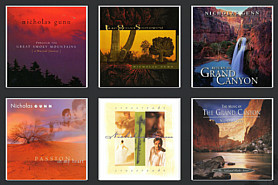 John: Every one of your National Park albums is like a colorful canvas. Each has their own merits, but how would you best describe the sound qualities of your National Park releases?
John: Every one of your National Park albums is like a colorful canvas. Each has their own merits, but how would you best describe the sound qualities of your National Park releases?
Nicholas Gunn: Cinematic is the word that always comes to mind for me. Cinematic music to me is like a soundtrack to be played against experiencing these natural wonders. Over and over again, I have received letters and emails from folks saying “we drove to the South Rim listening to The Music of the Grand Canyon” or “hiked the Appalachian Trail listening to Through the Great Smoky Mountains.”
Like Thirty-One Nights these albums were inspired, in essence, by travel and geographic location. The only difference being that my artist persona somewhat hid behind the National Park theme.
John: In the late 1990’s you founded the Anagram Records Label, and earlier you founded Gemini Sun Records, a label with numerous award-winning artist, many of whom were artists like yourself who made the Top Ten Billboard Charts. Who are some of the artists on the Gemini Sun Record Label under your direction?
Nicholas Gunn: Anagram existed for only around a year or so when I was previously married and it had two other license deals, one with Mars Lasar and one with Loren Gold as well as Cheryl Gunn’s titles and a few of mine as well. When I was divorced, Anagram dissolved and I started Gemini Sun Records. Gemini Sun Records also closed for business in 2009. Both were started as a way to represent artists in the genre of New Age/World Music that was steadily shrinking.
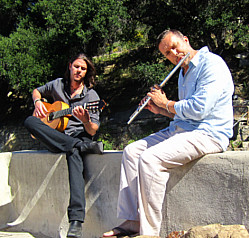 Labels such as Higher Octave, Windham Hill, and Narada were closing or being sold off to the majors as their assets in masters and publishing were the only thing left, sales were dwindling fast! The days of supporting retail such as Natural Wonders and Nature Company were now gone and artists coming off of these closing labels needed a home. Gemini Sun became that home for a select few; David Arkenstone, 2002, Mars Lasar, Medwyn Goodall, through MG Music, Loren Gold, and myself were just a few of the artists it represented!
Labels such as Higher Octave, Windham Hill, and Narada were closing or being sold off to the majors as their assets in masters and publishing were the only thing left, sales were dwindling fast! The days of supporting retail such as Natural Wonders and Nature Company were now gone and artists coming off of these closing labels needed a home. Gemini Sun became that home for a select few; David Arkenstone, 2002, Mars Lasar, Medwyn Goodall, through MG Music, Loren Gold, and myself were just a few of the artists it represented!
John: Would you like to tell us some of the highlights and other aspects, including the drawbacks of owning your own record label?
Nicholas Gunn: In my opinion, it’s a trap in many ways and little positive to talk about. It’s a thankless job that few take on to the degree I did as an artist owned label. I took it on to increase my profitability per sale, to make a difference in a market segment, and to represent great music and artists allowing them to own their own property (masters and publishing). Most artists block the desire to want to know or deal with national distribution, marketing, and promotion – and for good reason! It’s as stressful as hell!
The intricacies of managing the small margins associated with indie national distribution, marketing, and promotion of a niche label within a declining industry, within a declining economy is nothing short of a nightmare! Distributors are set up to protect their bottom line, at all costs! By cross collateralizing all returns, marketing, and promotion against all sales, the music business on this level is nothing more than a consignment business at massive risk to the label. If you couple that with major retailers who fail to comply with retail campaigns but then charge for the advertising they failed to comply with, it’s a fundamentally flawed system that produced the music industry we see and experience today.
John: The entire music industry as a whole has greatly changed over the years since you began producing music. What are some observations you have made over the years, and in what way has the music industry changed, for better or worse?
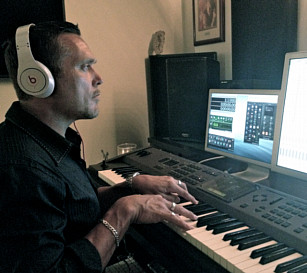 Nicholas Gunn: It’s still finding its way, but for the better! Like any business, it’s all about supply and demand and there is little demand for music sales as it used to exist. Music sales are not the future that I am relatively sure of! The use of music continues to be high, but through streaming, illegal downloading and sharing, and second hand online sales from the massive returns and recycling of the music industry as a whole. It’s all spread very thin at little profit to anyone, including the labels. I think there are a few models to watch, one of which would be the Electronic Dance Music market (EDM).
Nicholas Gunn: It’s still finding its way, but for the better! Like any business, it’s all about supply and demand and there is little demand for music sales as it used to exist. Music sales are not the future that I am relatively sure of! The use of music continues to be high, but through streaming, illegal downloading and sharing, and second hand online sales from the massive returns and recycling of the music industry as a whole. It’s all spread very thin at little profit to anyone, including the labels. I think there are a few models to watch, one of which would be the Electronic Dance Music market (EDM).
This is a model that has been born in the new distribution and profiteering age of music. Here is a platform with which DJ’s are now producing their own content in the studio and performing through the DJ method at low cost and extremely high output. The concept of sales has never been a priority and sharing/remixing within the community is embraced as a way to popularize the genre and its originating artist. The revenues are in packing 100,000 fans into a venue with the requirement the DJ/Producer simply show up with their gear over their shoulder! It’s brilliant!
The top ten DJ/Producers last year collectively made 127 million dollars and stand atop the industry money making leaders. Now, I am not talking about wedding DJ’s, I am talking about talented DJ/Producers – there’s a big difference! Secondly, and this is important I believe, we need to realize that music, especially in recorded form, is now highly dispensable and transferable. A great song, performance, and recording is still just that, great! It will always be consumed, but the real question becomes what will be the support mechanism that will allow for the creation and performance of this content?
Successful artists have a somewhat self-sustaining system, however how does a new unsigned artist become self-sustaining? I believe we are reverting back to the times when art was supported by benefactors and leaders within both business and government. Companies need art to further define and align their products within the marketplace, and leaders of countries will continue to require education and culture in arts to further the human race. It’s now about selling your talent to a group that needs your involvement to further its own cause, that’s how I see it.
 John: Can you foresee any trends developing that may influence your work and perhaps the work of other artists as a whole?
John: Can you foresee any trends developing that may influence your work and perhaps the work of other artists as a whole?
Nicholas Gunn: Quite frankly, this is my last album in the genre for the foreseeable future. I have a great passion for all music and the music business itself and I find the trend of developing more instrumental music within the current instrumental market place quite frustrating and stifling. There really are no venues that support the live performance of this genre and sales are at an all-time low. It’s a testament to my love of the genre that has produced Thirty-One Nights. I wanted to have an album I personally could be really proud of as my departure album.
On the side over the years I have produced my fair share of EDM as it does tend to border on instrumental at times. I have partnered with artist/vocalist Carmen Rainier and we have a project in the works titled (We Are) Nexus. It’s refreshing and invigorating to be a part of a larger and emerging music community that fully embraces the future of the music business. I am a musician and producer first and foremost and I got into this business for my work to be heard. This is the next chapter of my musical career.
John: I heard Thirty-One Nights is on the upcoming nomination ballot for Best New Age Album in the 55th GRAMMY® Awards on Feb. 10, 2013.You will know if nominated on December 5, 2012 isn’t that right, and is there any manner in which Nicholas Gunn fans can support your nomination for a possible music award?
Nicholas Gunn: Actually, it is on the ballot for Best World Music Album which I believe is more appropriate for the album itself. Yes, December 5th is when I will know if Thirty-One Nights receives a nomination. The award is really a peer recognition process of which fans have little part in unless they are a voting member of the academy. All I can say is that after 14 albums, two million sales, and 55 consecutive weeks on the Billboard chart it would be nice to be recognized by my peers; however it will not change the way I go about developing the next chapter of my musical career.
John: Naturally a GRAMMY® Award would put you in the spotlight as an artist, but aside from your own talents as a musician, what external factors have been the greatest influences to your success?
 Nicholas Gunn: I would say it’s in taking the risk of wearing all these hats over the years as an artist, writer, producer, engineer, label owner. They all make up for my experience in the business and how I now see the business. Granted, closing my label was an awful experience but liberating and defining all at the same moment. Every passionate path is littered with debris of some sorts and it’s having those experiences that have given me a greater understanding of what I want and what I don’t want. I believe my most successful days lie ahead of me because of this.
Nicholas Gunn: I would say it’s in taking the risk of wearing all these hats over the years as an artist, writer, producer, engineer, label owner. They all make up for my experience in the business and how I now see the business. Granted, closing my label was an awful experience but liberating and defining all at the same moment. Every passionate path is littered with debris of some sorts and it’s having those experiences that have given me a greater understanding of what I want and what I don’t want. I believe my most successful days lie ahead of me because of this.
John: During your career you have contributed money to the National Park organization, American Lung Association, plus you are on the board of directors for the Children’s Creative Project (CCP), in Santa Barbara, California. Clearly the arts and music education for children and other charitable organizations are important to you. Would you like to tell us about your Philanthropy work, and why it is important to you on a personal level?
Nicholas Gunn: Arts and education for children is paramount. I am a result of parents and a system that exposed me to a finer education in art and music. As a society, we tend to embrace mediocrity as a way to shy away from having to learn more about something, it’s an innate human trait. I sit on the board for the Children’s Creative Project because it grants much needed funding for events that expose children to fine art. It’s simply a matter of proper exposure. We become mediocre when we get older, but we are not that way as children. We learn what we are taught and we soak it all up, no matter which way it comes at us early in life. Real Music initiated the donation to The Grand Canyon Association from sales of The Music of the Grand Canyon.
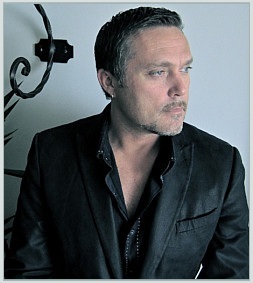 It was and still is a wonderful cause as the money promotes education and awareness of preservation to both children and adults. This trend carried forth for me through realizing it’s important to give back in this manner. Money is cyclical. You have to give as much as you receive.
It was and still is a wonderful cause as the money promotes education and awareness of preservation to both children and adults. This trend carried forth for me through realizing it’s important to give back in this manner. Money is cyclical. You have to give as much as you receive.
John: I would love to release some Nicholas Gunn news about a new project or a concert tour in the planning stages. Is there any additional news you would like to officially announce today?
Nicholas Gunn: I am sorry to say I think the biggest news might be found in my departure from the genre for the foreseeable future. But on a positive note, I have much to give and much to share, only within a different genre. I recently launched a new current events news page at NicholasGunn.com/News. I recommend everyone visit to see what’s new there!
John: Nicholas you are a legendary instrumental artist, regardless of genre or classification, and that my friend will never change! Needless to say I trust we will have a chance to interview again in the future. In closing for now, I want to thank you again for giving everyone this opportunity to find out the latest news about you, and your newest project with Dana Kemmerle and Chris Fossek. Is there anything you would like to say before we close, or express to the fans that have supported you over the course of your career?
Nicholas Gunn: I do want to thank, from the bottom of my heart, the valued fans that have supported me over the years. For passionate people such as you John that still see the value and potential in this beautiful genre of music. There are so many people really, over the years, that have helped me realize my goals, and of course I thank them all. I am eternally grateful.
For more information visit NicholasGunn.com. Sample or purchase albums and songs at the Nicholas Gunn music shop. Find details like the making of Thirty-One Nights, info about Dana and Chris, and visit Nicholas at social sites like Facebook. You can also find albums at major online music stores, including the artist page for Nicholas Gunn at Amazon.com. Interview photos are courtesy nicholasgunn.com & Big Stock Photo – Ardith.
